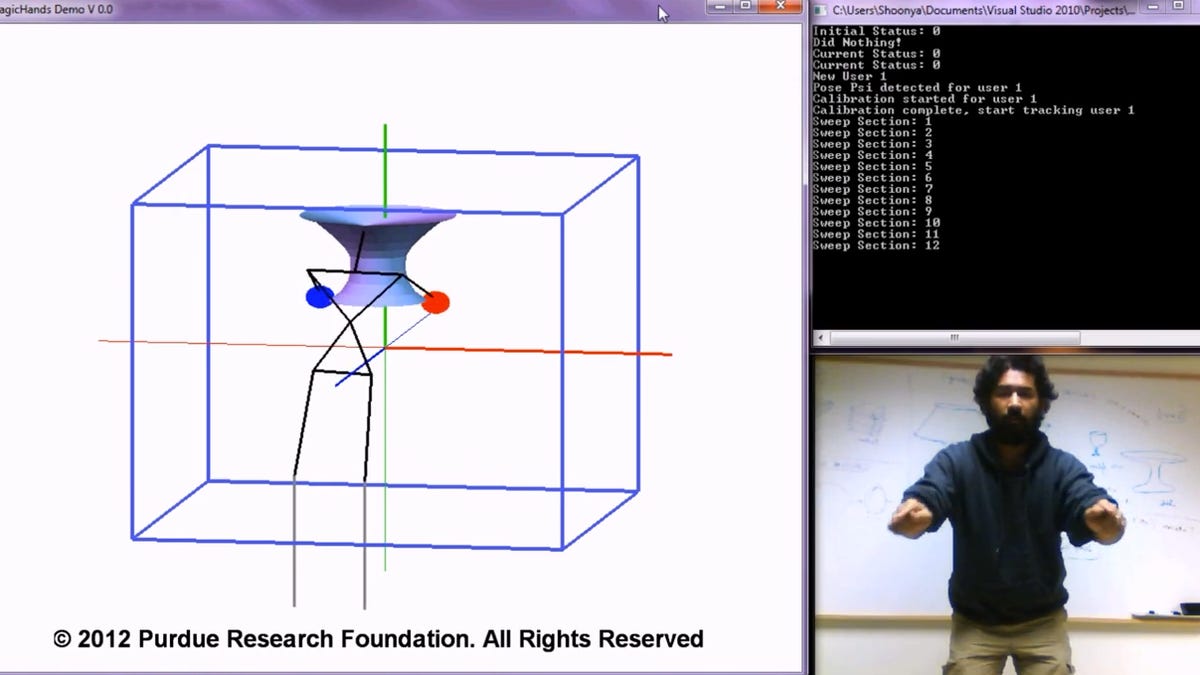ZeroUI promises hands-free 3D model creation
The Silicon Valley company's platform aims to make it possible for just about anyone to build their own 3D models -- without the use of complicated UIs.

SAN FRANCISCO--Building 3D models should be something everyone can do. That's the pitch from ZeroUI, a Silicon Valley startup that has created a technology platform designed to let anyone create their own digital models, whether a robot, drum, table, or anything else.
The Cupertino, Calif., company is relying on gestural input technologies such as Microsoft's Kinect, and soon, Leap Motion's Leap controller, as well as systems built into some computers, to allow users to create their models with nothing but their hands.
The company's name comes from the fact that its system has an extremely minimal user interface. Rather than requiring users to understand the mathematics and physics of a model they might want to build, the ZeroUI system simply allows them to stand in front of the input camera and use intuitive hand gestures to craft their 3D model (see the video below).
At TechCrunch Disrupt here this week, the company demonstrated the making of a digital 3D robot model. The demo tasked a user with making several different body parts for the robot, each of which could be shaped and molded with natural hand motions.
Once someone has created a 3D model, they can use the file the same way they would use one created in a more complicated CAD system -- they can 3D print it or use it as the basis for a more traditional manufacturing process or some other kind of digital project.
ZeroUI isn't the only company thinking about ways to help people easily create 3D models. Autodesk has its 123D line of modeling tools, and My Robot Nation also offers a way for users to design their own 3D-printed robot. Neither of those companies is built around hands-free technology, though a design tool out of Purdue University called Handy-Potter is.
In its current form, ZeroUI's system is fairly rudimentary, and likely not ready for prime time. But the five-person, National Science Foundation-funded company is not planning to sell its technology directly to end users. Instead, it hopes to license the system to third-party vendors who will incorporate it for their own purposes. Presumably, those companies would focus on building more polished front ends and let ZeroUI's technology do the heavy lifting.

